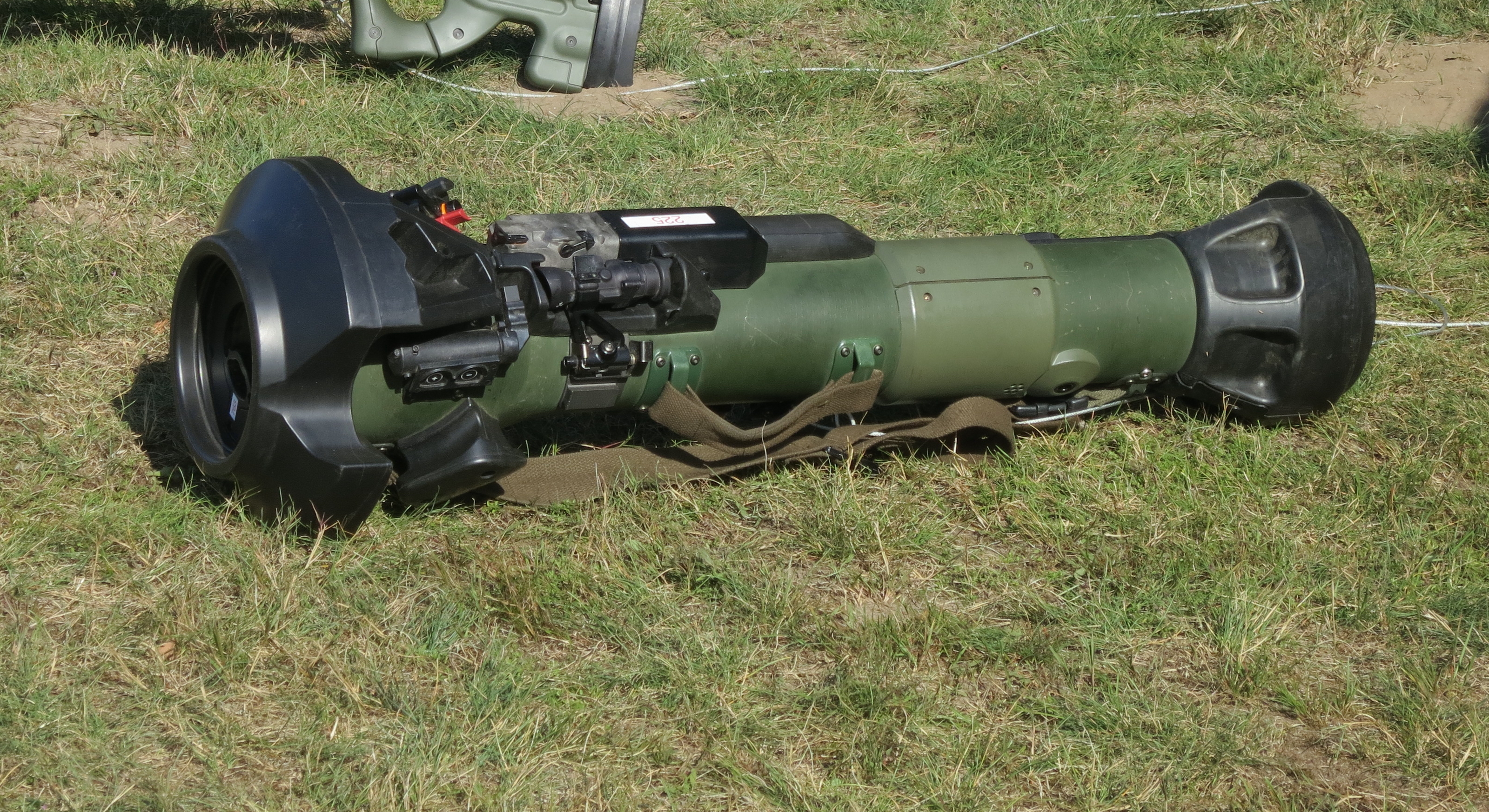Russia is all set to conduct joint military drills with Belarus. While Russian troops and armament have arrived in neighboring Belarus, the build-up along the Ukraine border has also increased. The west has cautioned that these war games could be a prelude to an invasion.
Ukraine has received widespread support from the United States and NATO countries. Keeping up with the NATO commitment, the United Kingdom has now sent special weaponry to Ukraine.
Britain had announced on January 17 that it had begun sending anti-tank weapons to Ukraine to help defend itself against a potential Russian invasion.
C-17 cargo planes of the Royal Air Force began flying sorties with Next Generation Light Anti-tank Weapons, or NLAWs, to Boryspil International Airport, west of Kyiv, Ukraine’s capital.

These sorties, however, were not devoid of controversy. The British cargo planes apparently strayed clear of the German airspace and took an alternative route to reach Ukraine through Poland. While the exact reasons for this is not immediately known, it could be due to favorable wind or other weather factors, as speculated by Andy Netherwood, a former RAF C-17 pilot.
Another possibility, according to The Drive, is that the two countries may have reached some kind of understanding that the UK military planes flying to Ukraine would not use the German airspace due to diplomatic sensitivities.
It's possible that they chose not to apply for German diplomatic clearance because there were concerns that the nature of the 'Dangerous Goods' being carried (which always require specific permission) might delay things.
— Andy Netherwood (@AndyNetherwood) January 18, 2022
A fifth(!) British C-17 military cargo plane has taken off for Ukraine over the past 24 hours.
According to reports, the cargo may include advanced NLAW missile systems.
Germany is said to have closed its airspace to these flights pic.twitter.com/hpdpyIEHgf
— Murad Gazdiev (@MuradGazdiev) January 18, 2022
Anyhow, the British flights under its ‘Operation Orbital’ successfully reached Ukraine. The British military’s security assistance mission in Ukraine, Operation Orbital, began in 2015 in the aftermath of Russia’s annexation of Crimea and the Kremlin’s subsequent active support for apparently local “separatists” fighting against the Kyiv government.
The British government has not stated the exact names of the “anti-armor” weapons that it is delivering to the Ukrainian military. Ukrainian officials, however, have revealed that the planes are carrying Next Generation Light Anti-tank Weapons (NLAW) seized from British stockpiles.
Is A Russian Invasion Inevitable?
Ukraine has warned that Russia has “nearly finished” building up forces that could be used in an offensive against the country, adding to fears that Moscow may invade at any time.
Russia has already deployed more than 127,000 troops in the region, according to the latest intelligence estimate from the Ukrainian Defense Ministry, which was shared exclusively with CNN.
Russia could potentially employ medium-range missile systems to “attack key objects,” according to the Ukrainian military, which noted that “more tactical groups” of ‘Iskander’ missiles have been transported near the border. According to the assessment, there are 36 Iskander launchers near Ukraine as of mid-January.

The Iskander missiles are capable of reaching targets 500-700 kilometers (310-430 miles) away. This means Kyiv, Ukraine’s capital, is within the range of this lethal weapon.
However, the main concern of Ukraine and its NATO partners remains the exercise that Russia is set to undertake with Belarus. The joint Russian-Belarusian drills will be held along Belarus’ southern and western borders, near Ukraine and Poland. The exercise will begin in February and will be divided into two phases.
The second phase of the exercises, scheduled for February 10-20, is officially aimed at preparing forces for “suppressing and repelling external aggression in the course of a defensive operation, countering terrorism, and protecting the interests of the Union State,” according to Russian deputy defense minister Alexander Fomin.
According to media reports, 12 Sukhoi Su-35 fighter jets, two S-400 anti-air missile systems, and a Pantsir missile system will be sent to Belarus for the first phase of the war games.
Additionally, Russian forces have been amassing in four sites, according to an unclassified US intelligence dossier, acquired by The Washington Post, which includes satellite images. It reveals 50 battlefield tactical groups are currently deployed, along with “newly arrived” tanks and artillery.
Even though the exact equipment that Russia has deployed along the Ukrainian border remains unknown, some analysts have predicted that main battle tanks like T-90 and T-72B3 could be used in case of an invasion. The T-90 is a battle-hardened tank that has been deployed in Ukraine before.
Countermeasure systems like Shtora-1 could also be deployed to confuse the enemy anti-tank missiles, according to an analysis by Brent M. Eastwood, the defense editor of the 1949 website.
Russia might also deploy its revered air defense system, the S-400, along with its massive advanced airpower. Further, according to the new Ukrainian assessment, Russia backs more than 35,000 separatists in eastern Ukraine and has roughly 3,000 military soldiers stationed there. Moscow denies stationing troops in Ukraine’s east.
Ukraine Bolstering Its Defense
Kyiv has now received the British Next Generation Light Anti-tank Weapons to create deterrence against Moscow. The NLAW (Main Battle Tank and Light Anti-tank Weapon) is a one-shot infantry anti-tank system that consists of a disposable launcher preloaded with a single guided missile.
The weapon can be used in two different modes: direct attack and top attack, in which the NLAW’s munition is configured to detonate above the tank’s weakest point.
It is not yet known how many NLAWs Ukraine will receive. Video footage of the weaponry landing in Ukraine implies that hundreds of these missiles have already arrived, according to The Drive.
Anti-tank weapons have long been seen as a key equalizer for the Ukrainian military in any potential large-scale confrontation with the Russians, who have a general advantage in quantity and, in some aspects, quality, particularly when it comes to tanks and other heavy armored vehicles.
Unlike the NLAW, the US-made Javelin anti-tank missiles are extremely capable weapons that are fired from a reloadable launch system. They are frequently hailed as one of the country’s most significant defense acquisitions in recent years.
The Ukrainian military displayed the results of a live-fire demonstration of Javelins against targets that were supposed to simulate Russian tanks with makeshift cage armor on top last December. In recent months, Russian tanks in this configuration have been sighted near Ukraine’s borders.

The US administration has supplied more Javelins to Ukraine, as well as other weapons and equipment, and is working on putting together other military aid packages.
Beyond the United Kingdom, a number of America’s allies and partners have been doing the same, with Estonia in particular withdrawing Javelins from its own stockpiles to give to the Ukrainian military. Estonians have also been looking to deliver second-hand Soviet-era howitzers and ammo to Ukraine.
The threat of a Russian invasion looms large, indicated by a recent cyberattack on Ukraine that disabled its key infrastructure, besides the massive build-up of troops and armament from multiple sides and the joint drills with Belarus.
Russia considers a possible Ukraine membership of NATO as a security threat that it cannot quite afford. The NATO members are expected to pour in equipment to avert a 2014-like situation that led to the Russian invasion and subsequent annexation of Crimea.
- Contact the author at sakshi.tiwari9555@gmail.com
- Follow EurAsian Times on Google News




